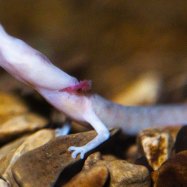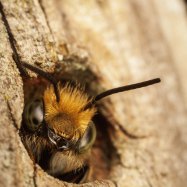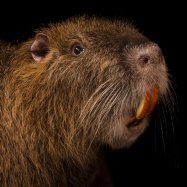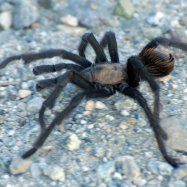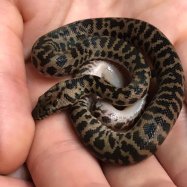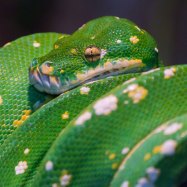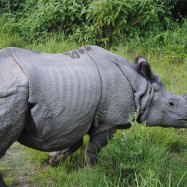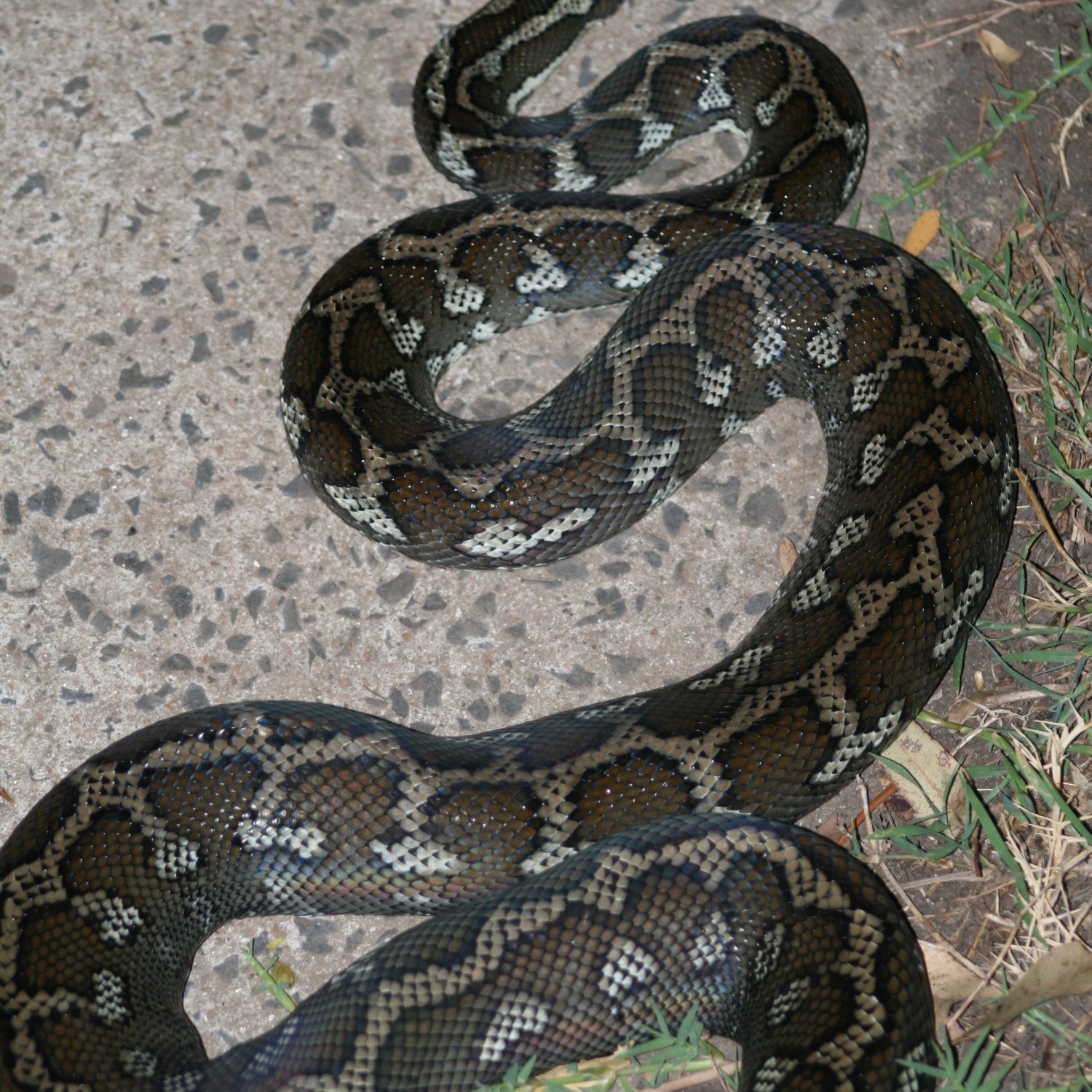
Carpet Python
Up to 3 meters (approx. 10 feet)
The Carpet Python, also known as the Diamond Python, can grow up to 3 meters in length and is found in Eastern and Northern Australia. Its slender body and broad head make it an impressive hunter. Belonging to the Pythonidae family, it is a popular pet due to its docile nature and beautiful color patterns. #CarpetPython #Wildlife #Australia
Animal Details Summary:
Common Name: Carpet Python
Kingdom: Animalia
Habitat: Grasslands, woodlands, rainforests
The Marvelous Carpet Python: A Reptile Like No Other
The carpet python, scientifically known as Morelia spilota, is a fascinating reptile with a captivating appearance and unique characteristics. Found in the diverse habitats of eastern and northern Australia, New Guinea, and Indonesia, the carpet python is a true wonder of nature. From its distinctive coloration to its impressive size and impressive feeding habits, this animal is a top predator in its habitat. In this article, we will explore the magnificent features of this species and why it stands out among other reptiles Carpet Python.The Classification of Carpet Python
To begin with, let's take a closer look at the scientific classification of the carpet python. Like all living organisms, the carpet python belongs to a specific kingdom, phylum, class, and order. It is a member of the Animalia kingdom, the second largest kingdom after plants. Within the phylum Chordata, the carpet python falls under the subphylum Vertebrata, which includes animals with a well-developed backbone. Further down the classification, the carpet python is classified under the class Reptilia, which includes all reptiles such as snakes, lizards, and turtles. Moving on, the carpet python belongs to the order Squamata, which consists of reptiles with overlapping scales. Finally, the carpet python is a member of the family Pythonidae, which is dominated by nonvenomous snakes, including pythons.The Natural Habitat of Carpet Python
The carpet python is a versatile reptile that can thrive in various habitats. Its natural habitat includes grasslands, woodlands, and rainforests, making it one of the most adaptable reptiles in the world Cephalaspis. In Australia, the carpet python is commonly found in open woodlands and can also be spotted in urban areas. In New Guinea, it can be found in the dense forests, while in Indonesia, it inhabits the islands of Sulawesi, Timor, and Lombok. Due to its ability to adapt to different environments, the carpet python has a widespread distribution, making it a common sight for many nature enthusiasts.The Feeding Behavior of Carpet Python
Like all pythons, the carpet python is a carnivore, meaning it feeds on other animals. It has a unique and efficient feeding method, making it a skilled predator. Unlike venomous snakes that use toxins to immobilize their prey, carpet pythons rely on constriction to kill their prey. This involves wrapping their muscular bodies around the prey and squeezing it until it suffocates. The carpet python has robust jaw muscles and sharp teeth that enable it to grip and overpower its prey. Its diet includes a variety of small mammals, birds, and reptiles, which it hunts at night with its excellent sense of smell and heat-sensing pits along its jawline.The Appearance of Carpet Python
One of the most striking features of the carpet python is its coloration, which can vary depending on the subspecies. Typically, it has a light to dark brown body with irregular blotches. The blotches can also be in other colors such as black, gold, or cream, giving the carpet python a beautiful and distinctive appearance. Its body is slender and elongated, with a broad head and a muscular body. The carpet python can reach up to 3 meters in length, making it one of the largest snake species in the world. Its long and slender body allows it to move swiftly and silently, making it an excellent hunter.The Magnificent Beauty of Carpet Python
Apart from its impressive physical appearance, the carpet python also has a unique and mesmerizing behavior. This species is known for its beauty, and it is often kept in captivity as a pet by reptile enthusiasts. Due to its docile nature, the carpet python is a popular choice for pet owners, and with proper care, it can make a great companion. It has a calm demeanor and can be easily handled, making it a suitable pet for both experienced and inexperienced owners. In the wild, the carpet python tends to be shy and will retreat when threatened, but with regular handling and care, it can become sociable and interactive.The Threats Facing Carpet Python
Despite its growing popularity in captivity, the carpet python is still facing several threats in the wild. The biggest threat is the loss of its natural habitat due to urbanization and deforestation. This has led to a decline in their population, especially in Australia, where they are now considered endangered. Another threat comes from the illegal pet trade, where they are often captured and sold as exotic pets. These factors have put a strain on the carpet python's population, and conservation efforts are being put in place to protect this magnificent species.In Conclusion
In summary, the carpet python is a remarkable reptile with many outstanding features. From its diverse habitat to its impressive feeding behavior and striking physical appearance, it is a species that deserves our attention and admiration. Its adaptability and docile nature make it a popular choice for reptile enthusiasts, and it is a welcome addition to any habitat it inhabits. As we continue to learn more about this species, let us also do our part in preserving its natural habitat and ensuring its survival for future generations to appreciate its beauty. The carpet python is indeed a reptile like no other, and it is a true marvel of the animal kingdom.

Carpet Python
Animal Details Carpet Python - Scientific Name: Morelia spilota
- Category: Animals C
- Scientific Name: Morelia spilota
- Common Name: Carpet Python
- Kingdom: Animalia
- Phylum: Chordata
- Class: Reptilia
- Order: Squamata
- Family: Pythonidae
- Habitat: Grasslands, woodlands, rainforests
- Feeding Method: Carnivorous
- Geographical Distribution: Australia, New Guinea, Indonesia
- Country of Origin: Australia
- Location: Eastern and Northern Australia
- Animal Coloration: Varies depending on subspecies, typically light to dark brown with irregular blotches
- Body Shape: Slender and elongated with a broad head and a muscular body
- Length: Up to 3 meters (approx. 10 feet)
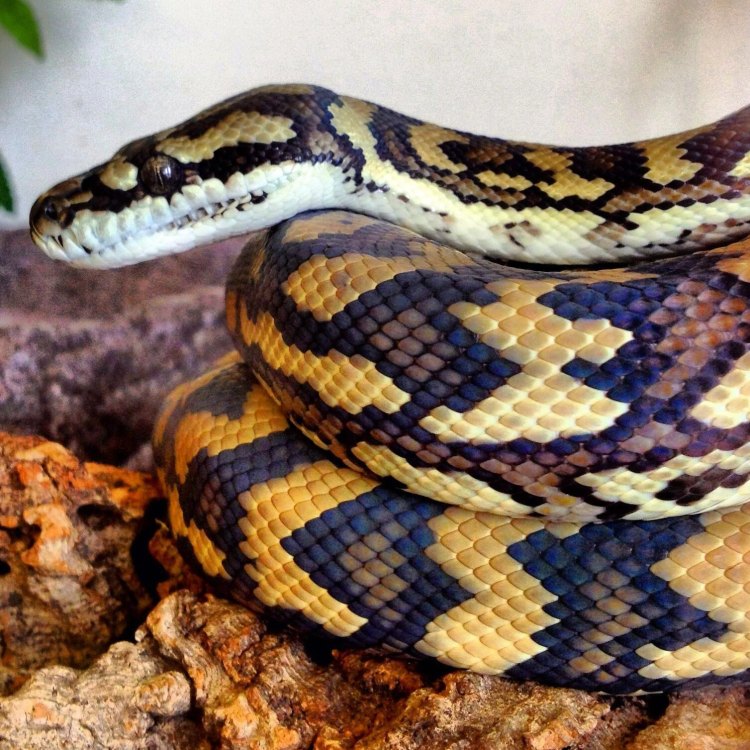
Carpet Python
- Adult Size: 3-4 meters (males), 2-3 meters (females)
- Average Lifespan: 20-30 years
- Reproduction: Sexual
- Reproductive Behavior: Mating occurs in spring and eggs are laid in late spring or early summer
- Sound or Call: Hissing and growling
- Migration Pattern: No regular migration pattern
- Social Groups: Solitary, except during mating season
- Behavior: Nocturnal, arboreal, and excellent climbers
- Threats: Habitat destruction, road mortality, hunting for skin and meat
- Conservation Status: Least Concern
- Impact on Ecosystem: Important in controlling rodent populations
- Human Use: Captivity, pet trade, leather and meat industry
- Distinctive Features: Distinctive head markings and scale patterns
- Interesting Facts: Carpet pythons are known for their arboreal lifestyle and ability to climb trees and shrubs with ease
- Predator: Humans, large birds, and mammals
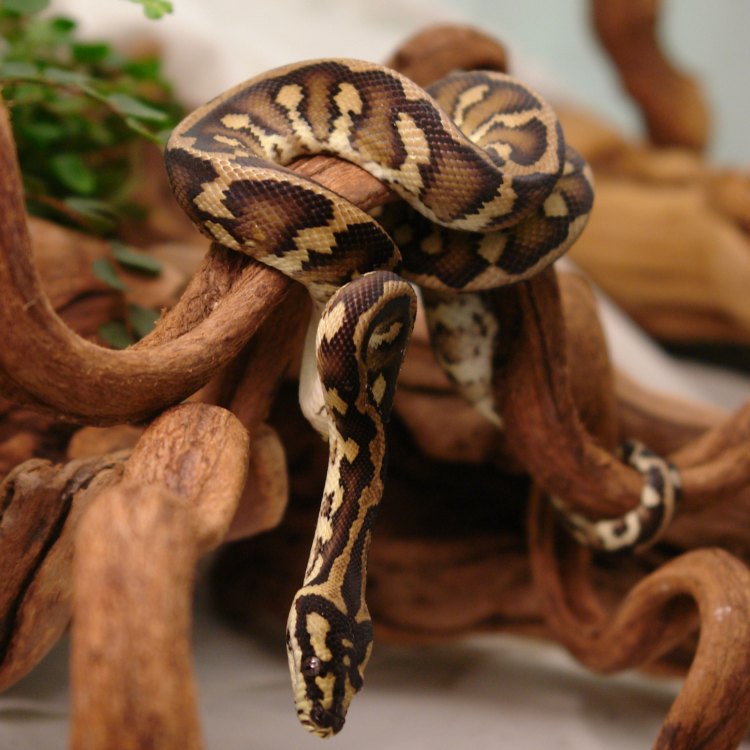
Morelia spilota
The Fascinating World of Carpet Pythons: A Closer Look at These Arboreal Giants
Deep in the dense rainforests of Australia, there is a secretive and elusive creature that has captured the imaginations of many wildlife enthusiasts - the Carpet Python. With its distinctive markings, impressive size and elusive nature, these arboreal giants have intrigued and fascinated humans for centuries. In this article, we will take a closer look at the unique features, behaviors, and impact of the Carpet Python on its ecosystem and its interactions with humans.The Carpet Python, scientifically known as Morelia spilota, is a species of snake found primarily in Australia and Papua New Guinea PeaceOfAnimals.Com. They belong to the Pythonidae family, which also includes other popular snakes such as the reticulated python and the Burmese python. There are a few subspecies of Carpet Pythons, such as the Coastal, Inland, and Jungle Carpet Pythons, each with slight variations in appearance and habitat.
One of the most striking features of the Carpet Python is its size. As adults, males can reach a length of 3-4 meters, while females average around 2-3 meters. This makes them one of the largest snake species in Australia. Their large size, along with their striking appearance, has also made them a popular choice for the exotic pet trade. However, it's important to note that their captive lifespan is significantly shorter than their wild counterparts, with an average of 10-15 years.
Speaking of lifespan, Carpet Pythons have an impressive one, with individuals in the wild living up to 20-30 years. This is due to their relatively low mortality rate in their natural habitat, as well as their excellent ability to adapt and survive in various environmental conditions Crocodile Monitor.
When it comes to reproduction, Carpet Pythons follow a sexual mode of reproduction. Mating usually occurs in the spring, and eggs are laid in late spring or early summer. Female Carpet Pythons can lay up to 20 eggs per clutch, and they provide no parental care once the eggs are laid; instead, the eggs are left to hatch on their own.
In terms of behavior, these snakes are known to be primarily solitary, except during the mating season. They are also nocturnal, which means they are active at night, and spend most of their time in trees or shrubs. This makes them highly arboreal, and they are excellent climbers, capable of navigating through dense foliage with ease. Their ability to climb vertically is also aided by their distinctive scale patterns, which provide them with a better grip on branches and trees.
One thing that truly sets the Carpet Python apart from other snake species is their distinctive hissing and growling sounds. These sounds are used primarily as a form of defense, and they are usually accompanied by the snake flattening its head into a triangular shape. These "head markings" give the Carpet Pythons a unique and intimidating appearance, often striking fear into their potential predators.
Speaking of predators, the Carpet Python has a few natural enemies, including humans, large birds, and mammals such as dingoes. However, their biggest threat comes from humans, mainly due to habitat destruction and road mortality. These snakes also face significant pressure from hunting, as they are hunted for their skins and meat, which is highly valued in the leather and meat industry. These threats have led to population declines in some areas, threatening the survival of specific subspecies of Carpet Pythons.
Despite these challenges, the overall conservation status of the Carpet Python is currently listed as "Least Concern" by the International Union for Conservation of Nature (IUCN). This is due to their wide distribution and adaptability to various habitats, which makes them less vulnerable to extinction compared to other snake species.
One of the crucial roles the Carpet Python plays in its ecosystem is the control of rodent populations. As ambush predators, these snakes feed on a variety of small mammals, such as rats and mice, which helps to keep their numbers in check. This is especially beneficial for farmers, as it can help reduce crop damage caused by rodents.
In addition to their impact on the ecosystem, Carpet Pythons also have a significant presence in human culture. In some indigenous Australian cultures, these snakes are considered to be symbolic and are believed to have healing powers. They are also highly prized in the exotic pet trade, making them popular among reptile enthusiasts.
In recent years, with increased awareness about preserving wildlife and their habitats, there has been a rise in the popularity of keeping these snakes as pets in captivity. However, it's essential to understand the responsibilities that come with owning a Carpet Python as a pet. These snakes require a specialized diet and a properly sized enclosure with adequate heating and humidity levels. It's also crucial to ensure that the snake comes from a reputable breeder to avoid supporting the exploitation of wild populations.
In conclusion, the Carpet Python is a fascinating and unique creature that has captured the hearts of many. From its impressive size and striking appearance to its arboreal lifestyle and important role in its ecosystem, these snakes hold a special place in the Australian wildlife community. By understanding and appreciating these magnificent creatures, we can take the necessary steps towards conserving and protecting them for future generations to admire and learn from.
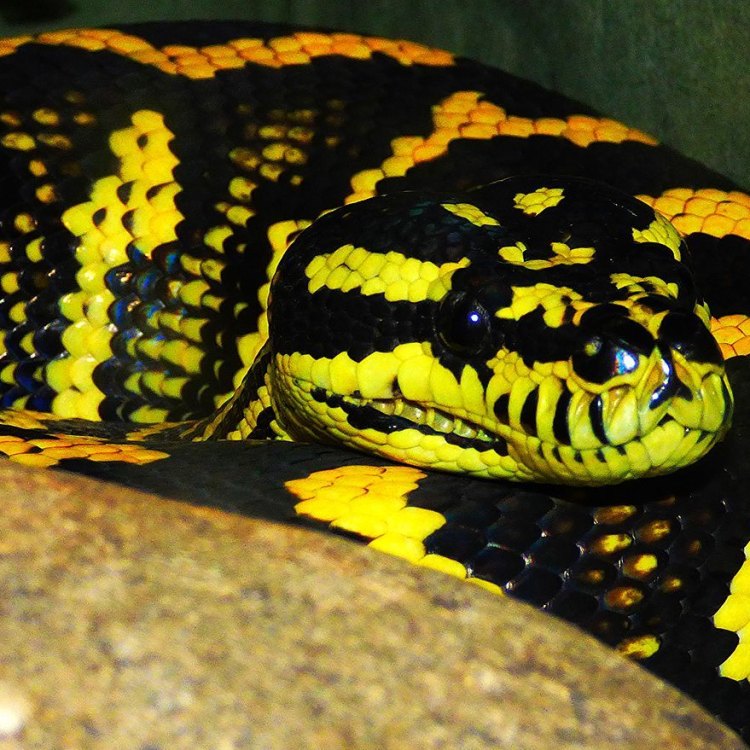
The Marvelous Carpet Python: A Reptile Like No Other
Disclaimer: The content provided is for informational purposes only. We cannot guarantee the accuracy of the information on this page 100%. All information provided here may change without prior notice.

